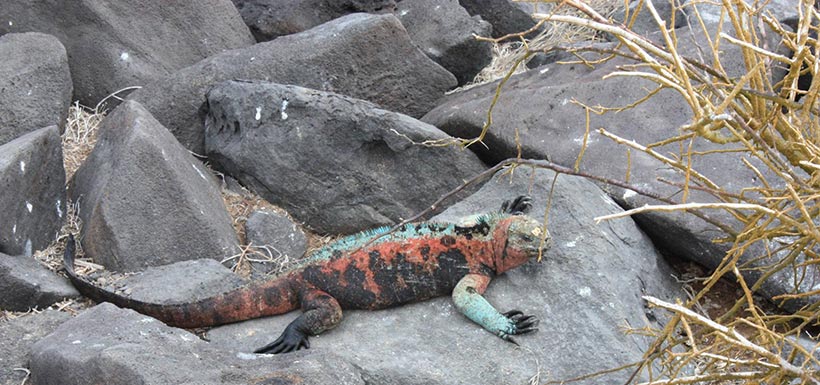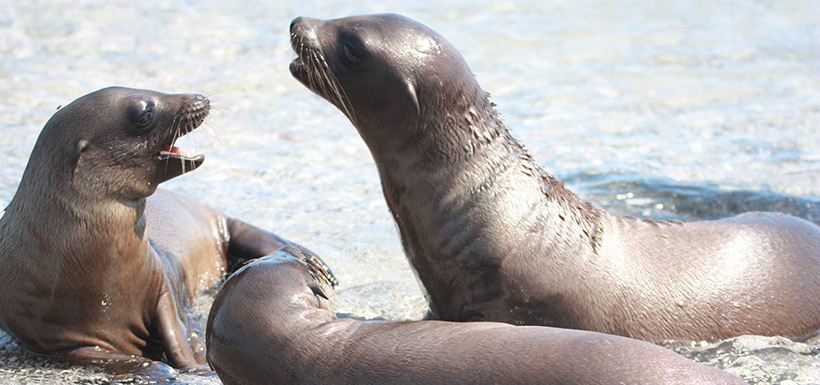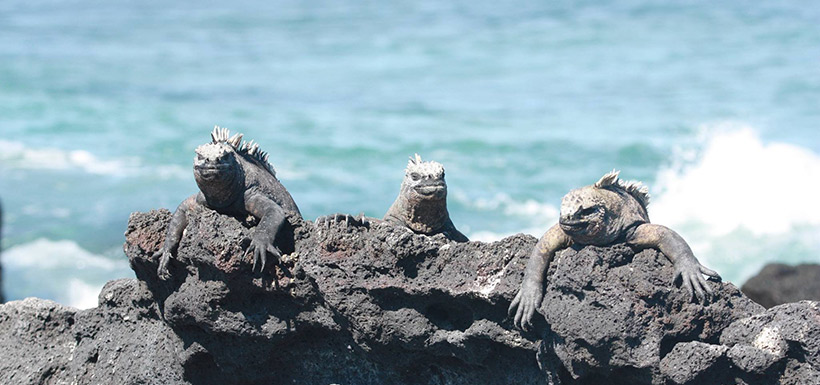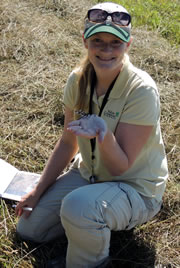My bucket list adventure in the Galapagos Islands
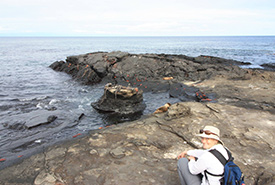
Kristyn Ferguson in the Galapagos Islands (Photo by Jeff Verberne)
For many biologists, the Galapagos Islands are usually near the top of their list of places to see in this lifetime. On my bucket list they were annotated with an “!”. When my mentor and good friend James Duncan passed away suddenly in January 2018, it made me realize that life truly is very short. It made me think that the places we get goosebumps thinking about should be exactly where we immediately start planning to go (regardless of the cost to get there), and to explore it the right way. This is how my husband and I ended up flying to Ecuador, then 1,000 kilometres west over the Pacific Ocean to the Galapagos Islands this past October.
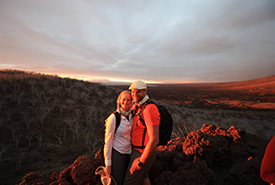
The black, desert-like, windblown volcanic landscapes of the Galapagos Islands greeted us (Photo courtesy of Jeff Verberne)
Stepping off the plane, we realized something was very, very different about this place. The black, desert-like, windblown volcanic landscapes that greeted us and the huge land iguanas sunning themselves on the side of the runway were clues that this trip was going to be epic. Gingerly stepping over lounging, carefree sea lions as we made our way to our first night’s accommodation was another hint.
It turns out that the animals on these islands, largely unaffected by human pressures such as hunting and harassment, simply do not mind humans being around. The cold, nutrient-rich ocean waters in this part of the world draw such an abundance of sea life to the area. These carefree critters, which also include blue-footed boobies, leatherback sea turtles, whale sharks and marine iguanas, are literally underfoot, swimming beside you in the water or flying overhead pretty much all of the time.
Being in this close communion with nature was incredibly special. I snorkelled daily with sea lions and learned to twist my body around under water to mimic their movements so they would “play” with me, sometimes swimming right up to my mask before quickly turning away, or stealing a feather right out of my hand. I watched Nazca boobies (a cousin of the colourful blue-footed booby) perform intricate mating rituals, such as presenting females with feathers and twigs to impress them, only three metres away from my feet. One day I turned my head while snorkeling to see a family of five Galapagos penguins zoom past me.
Related blog posts
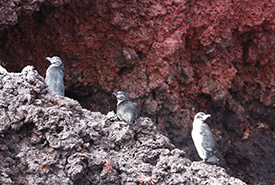
Galapagos penguins (Photo by Jeff Verberne)
The Galapagos landscapes are as harsh as they come, as they are some of the newest volcanic formations on the planet that haven’t had a chance to weather, erode and develop soil yet. Isla Fernandina, the furthest west, is only 50,000 years old (a geological baby!). These uneven black landscapes, formed by lava cooling following years of underwater volcanic eruptions, get extremely hot and very dry under the equatorial sun. Animals that landed here by floating on rafts of vegetation, being blown in or flying in were forced to adapt and evolve their bodies and behaviours very quickly in order to survive. This explains why some iguanas on the Galapagos Islands learned to swim, as the only food for these herbivorous land lizards was algae growing under water, so under water they went. Today, they have evolved special glands on their noses to “sneeze” out salt that accumulates after their daily swim to feast below the surface!
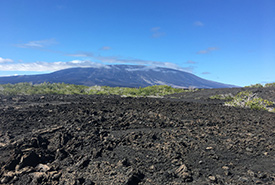
Isla Fernadina (Photo by Jeff Verberne)
The harsh landscapes reminded me of the alvars I work on here in Ontario. The Carden Alvar, northeast of Lake Simcoe, is one of the hottest, driest, crunchiest and most unforgiving places in the heat of summer. Here, the plants that have evolved to survive these droughts are often unique to the globally rare alvar habitat, being the only ones who could quite literally “take the heat” (and the spring floods). I haven’t spotted an alvar iguana yet, but it doesn’t mean I’m going to stop looking.
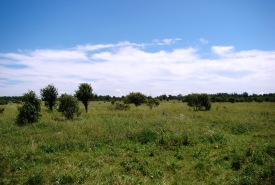
Carden Alvar, ON (Photo by NCC)
I came home from the Galapagos Islands with an even greater appreciation for what wildlife needs to go through in order to survive on a harsh landscape. I also felt immensely proud to be a part of the conservation movement that provides Canadian wildlife with the habitats they need to thrive. I thought of James (who studied and loved marine biology) often — including when a cheeky sea lion with an attitude caught my eye and then darted away, leaving me laughing out loud.

